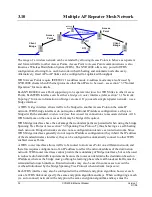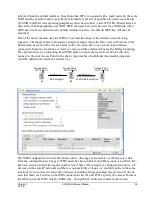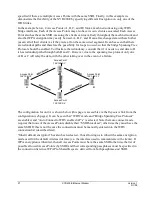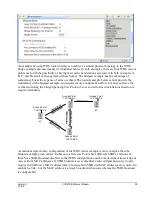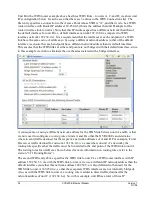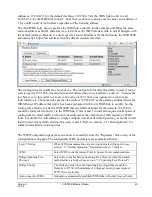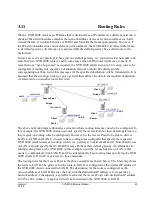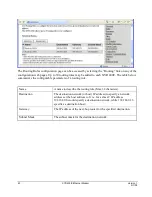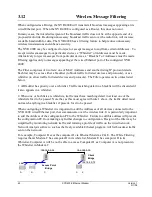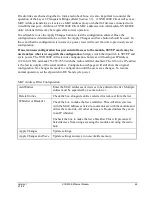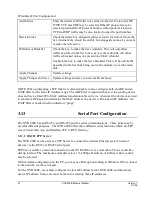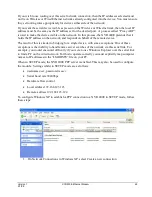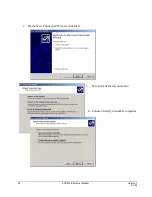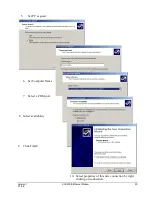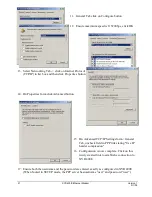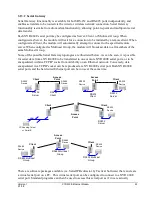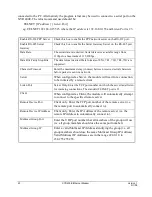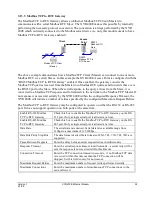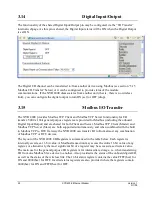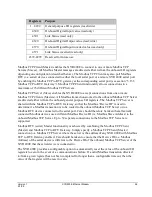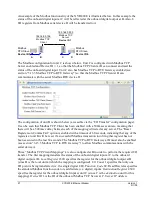
Version 1
XYR400E Ethernet Modem
42
5/1/08
3.11
Routing Rules
When a XYR 400E receives an IP frame that is destined for an IP address on a different network, it
checks if the network address matches the network address of one of its own interfaces (i.e. hard
wired Ethernet, or wireless Ethernet, or WDS) and forwards the frame appropriately. However, if
the IP network address does not match any of its interfaces, the XYR 400E will forward the frame
to its default gateway. In this case it is assumed that the default gateway has a valid route to the
destination.
In some cases it is not practical to have just one default gateway (i.e. routed wireless networks with
more than two XYR 400E routers; and in some cases when WDS router interfaces are used). If
more than one “next-hop router” is required, the XYR 400E allows for up to 30
routing rules
to be
configured. A routing rule specifies a destination network (or host) IP address and the
corresponding next-hop router that messages for the specified destination will be forwarded to. It is
assumed that the next-hop router (or
gateway
) will then deliver the data to the required destination
(or forward it on to another router that will).
Client
Router
LAN C
169.254.102.17
192.168.0.73
LAN A
Client
Bridge
Access Point
Bridge
192.168.0.34
192.168.0.34
192.168.0.72
192.168.0.72
Client
Router
LAN B
169.254.109.40
192.168.0.74
The above network diagram illustrates a situation where routing rules may need to be configured. In
this example, the XYR 400E clients need only specify the Access Point as their default gateway (i.e.
they require no routing rules be configured). However, for the Access Point to be able to deliver
traffic to LAN B and LAN C it needs to have routing rules configured that specify the respective
XYR 400E client/routers as next-hop routers (i.e. gateways) to networks B and C. Note that devices
on LAN A should specify the XYR 400E Access Point as their default gateway. An alternative to
adding routing rules to the XYR 400E in this example would be for each device on LAN A that
needs to communicate with LANs B and C to independently have routing rules specifying the XYR
400E clients at B and C as gateways to those networks.
The routing rules for the Access Point in the above example are shown below. The first entry shows
the route to LAN B. The gateway for the route to LAN B is configured as the wireless IP address of
the XYR 400E client connected to LAN B. The destination for the route is configured as the
network
address of LAN B. Because the
host
id of the destination IP address is 0, it specifies a
network address. Consequently, any traffic received at the Access Point with destination IP address
169.254.109.x (where x is any host id) will be forwarded to the XYR 400E at LAN B.








